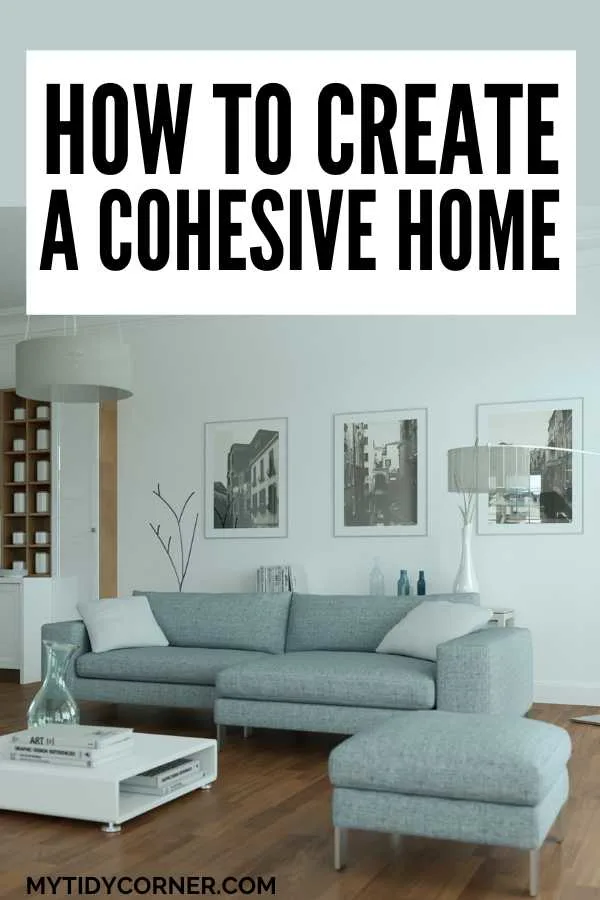If you are looking for how to make your home look cohesive, you are not alone. Many homes today are open-plan, with rooms visible from all over.
With rooms painted different colors, mismatched rugs, and hand-me-down furniture. Not to mention dirty dishes or heaps of laundry—it’s challenging to create a home where spaces flow into one another. So how do you create a cohesive home?
You can make your home look cohesive with a whole-house narrative that you carry through via consistent and harmonious choices of color palette, design style, shapes, patterns, and textures. Pay particular attention to balanced sightlines and an interior that flows into the exterior.
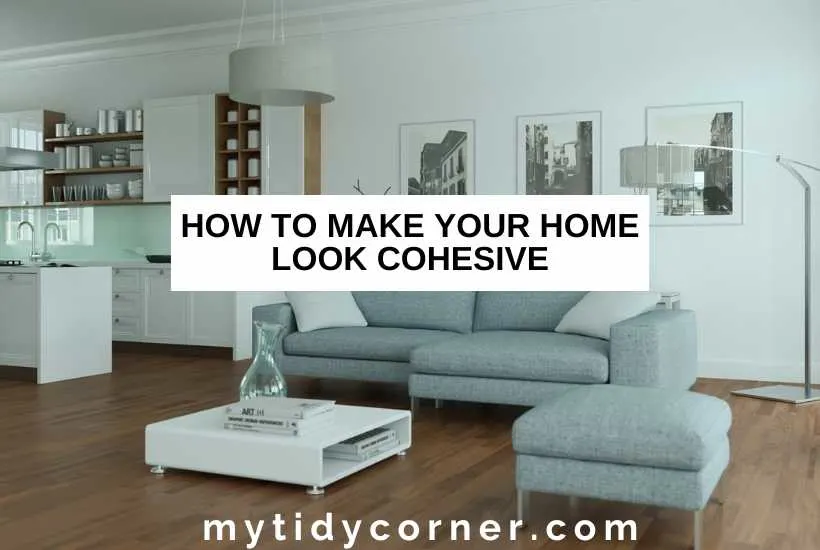
8 Simple Ways to Create a Cohesive Home
My sister is a fan of the eclectic and a passionate collector of textiles. Her home can get colorful and busy—and she loves it like that.
However, it can be overwhelming for her minimalist husband. So I’ve been helping her look for ways to create a more cohesive, harmonious flow from room to room.
I’d like to share what I’ve learned about making your home more cohesive.
#1. Have a Whole House Narrative
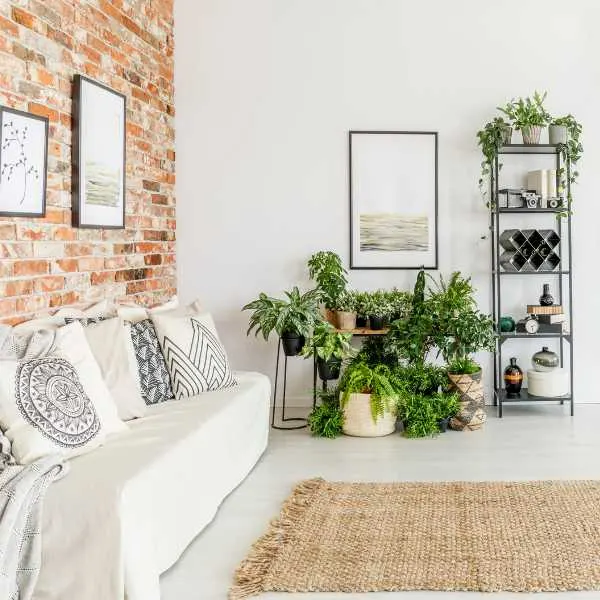
Interior designers will start with a whole-house master plan, with mood boards and an idea book where each room is mapped out, with records of paint color used, furniture required, etc.
Even if you’re not doing a whole-house renovation and the notion of a master plan is overwhelming, it helps to have your home’s story in your head.
Your home tells a story through the personal items in it, for example, through a sentimental photograph that reminds you of your grandparents or the rocking chair you sat on to nurse your babies.
Perhaps you want your study to have the mood of an English country library. Maybe you love entertaining and want your home to welcome guests and invite them to relax.
Once you have the story or mood in mind, note down shapes, colors, patterns, and existing items to help tell that story on a vision board. You’ll soon discern common threads that run through your story, which define and unify your style together.
For example, my sister’s youngest had a passion for amphibians, a typical interest inherited from his eccentric mom. We created a frog-themed bathroom with a brightly patterned shower curtain.
My sister had a frog-shaped statuette she’d picked up years before at a market that fitted in well—and a matching one that stands on a shelf in their living room.
A couple of frog pictures from yard sales completed the look. The green palette is carried from the rest of the home via the towels and the blue of the shower curtain into the boys’ bedroom and playroom.
#2. Keep Consistent
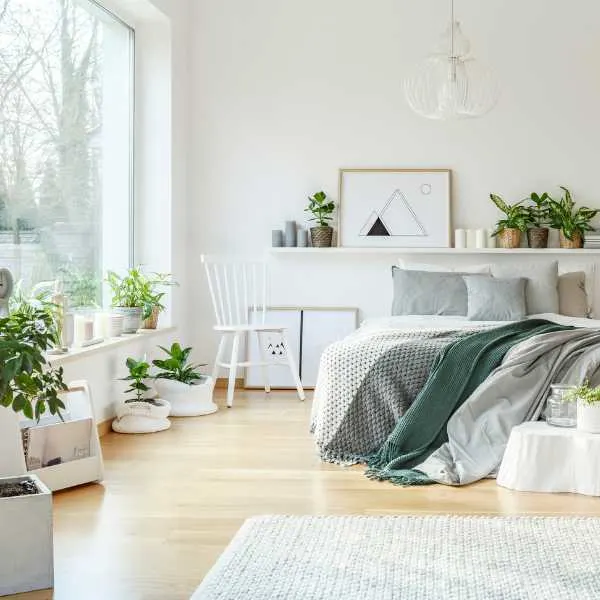
If you’ve taken time to plan your home interior, you can make decisions ahead of decorating that will aid cohesion:
- Use the same lighting style and switches throughout the house.
- Select one metallic accent and keep it consistent for all door handles and fixtures.
- Apply one window treatment style throughout but with different textiles.
- Keep a consistent color palette.
#3. Choose a Color Palette
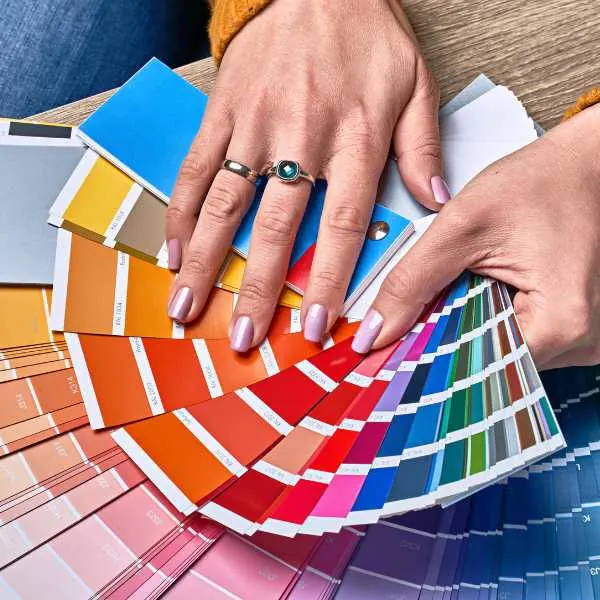
Color is a strongly unifying element that helps to create a cohesive home. From your vision board, you should be able to identify at least three colors to provide a foundation for your home’s design.
Using color intentionally anchors differences in design style in different rooms, meaning you can pull off surprises.
Most designers follow the 60/30/10 or 70/20/10 ratio for combining three colors:
- Choose a foundation color that will dominate or anchor the scheme. This is usually the color of the walls or floor.
- A secondary color is used for upholstery, such as a sofa or bedding.
- The third color is an accent color to add contrast or a pop of color in a neutral scheme.
A Neutral Palette
Choosing a neutral palette is a handy starting point because they’re safe, versatile, and easy to live with. Go for warm earth tones, like greige, charcoal, or cream, as a foundation color that works well with other neutrals and accentuates brights.
Remember that neutrals need not be light colors—moody and intense colors create a contemporary feel.
#4. Choose a Design Style
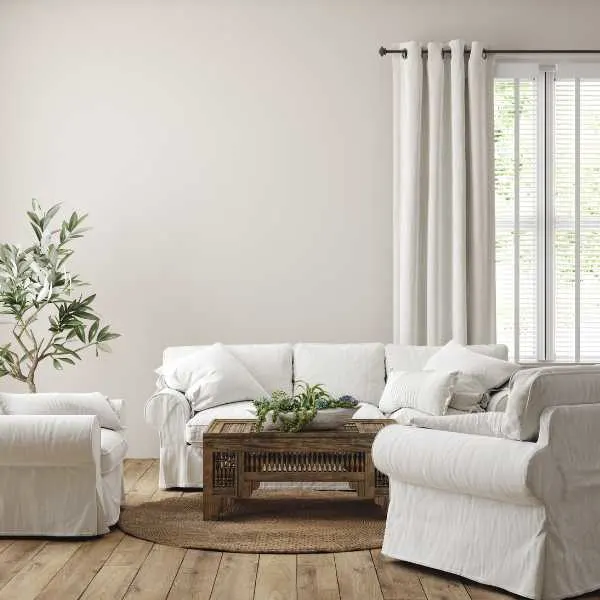
Another way to create a harmonious home interior is to consider which design style you want to achieve.
Your home’s narrative will often suggest a style. For example, a relaxed, inviting home that welcomes friends and family may lend itself to a coastal vibe or a farmhouse style.
Cohesion does not mean limiting yourself to a single, monolithic design style. You can combine elements of different approaches so long as the mood is cohesive. Minimalism and Scandinavian design have many elements in common if you aim for a clutter-free, pared-back look.
So long as the pieces you choose create the same mood, they will be harmonious.
#6. Repeat Shapes, Patterns, and Textures
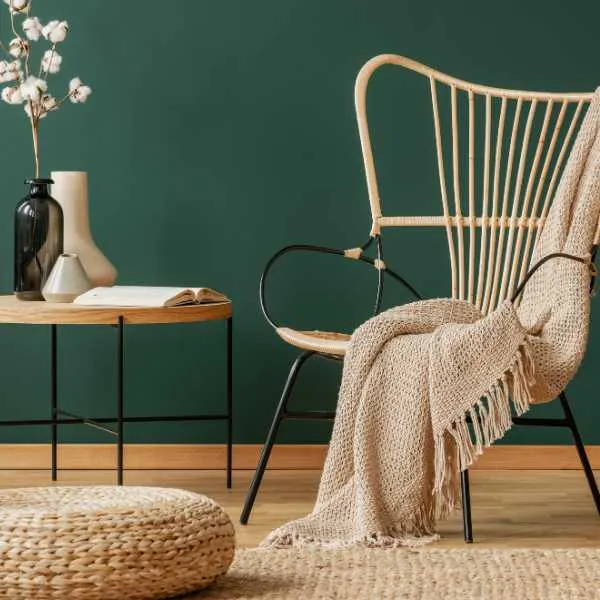
A design style will suggest specific furniture shapes, textile patterns, and textures. Repeating these elements in a single room and throughout the house will carry through a golden thread. This helps to create balance and connection.
Textiles are valuable unifying agents, and I use them throughout my home. Making curated choices of throws, pillows, rugs, drapes, and upholstery will evoke a mood. For example, carry indigo ikat, batik, and block prints through a Boho home.
Add blue and white stripes, and you have a perfect coastal vibe. Neutral, earthy linens are ideal for an organic modern home but also work well for a farmhouse interior.
Subtle repetition means changing the nuance slightly. For example, your chosen colors may be terracotta, beige, and brown for a retro vibe. Group round brown vases of a similar size together on a shelf in one room.
In another room, hang a beige and brown abstract painting with circular swirls to echo color and pattern. A third room could have a round rug with a pattern in the three shades.
Reiterate textures. For example, Boho interiors commonly include natural fibers, like rattan mats and wicker baskets. Another room could have rattan blinds, while another, a wicker chair.
An inexpensive and effective way to create cohesion through decor is to use plants.
Pot plants and houseplants weave a lush, leafy green thread through your home. And they are as comfortable in a mid-century modern home as a Japandi chic one. The fact that they supply oxygen and purify the air is an added advantage.
#7. Check Lines of Sight
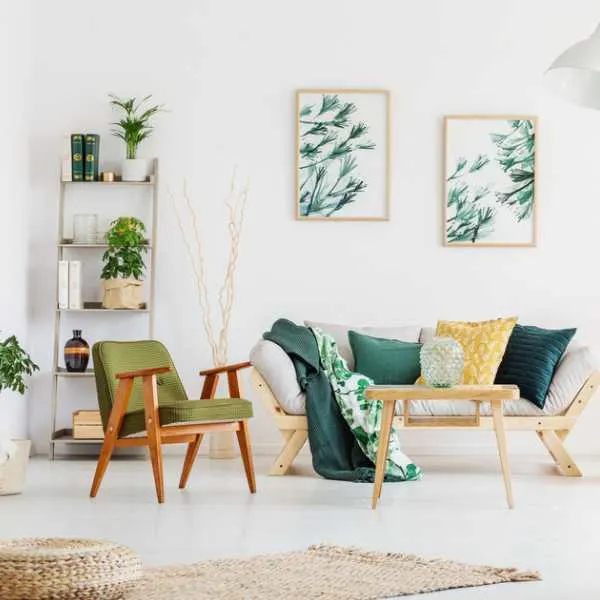
Lines of sight or sightlines refer to spaces where you can see from one room into an adjacent room or part of the house.
A cohesive home will have a sense of flow between sightlines, with repetition of wall paint, light fixtures, textiles, or design style.
For example, my brother’s living room, dining room, and kitchen all share the same open-plan space. So we’ve created a cohesive flow through the same glowing wooden floors and fresh white walls throughout.
There’s one accent wall papered in a gorgeous botanical print, echoed by the plants and the botanical prints on the living room walls.
For rooms that don’t share sightlines, the bedroom and kitchen, for instance, you can have a shift in mood without upsetting the flow of the home. However, you can carry through elements for cohesion.
#8. The Great Outdoors
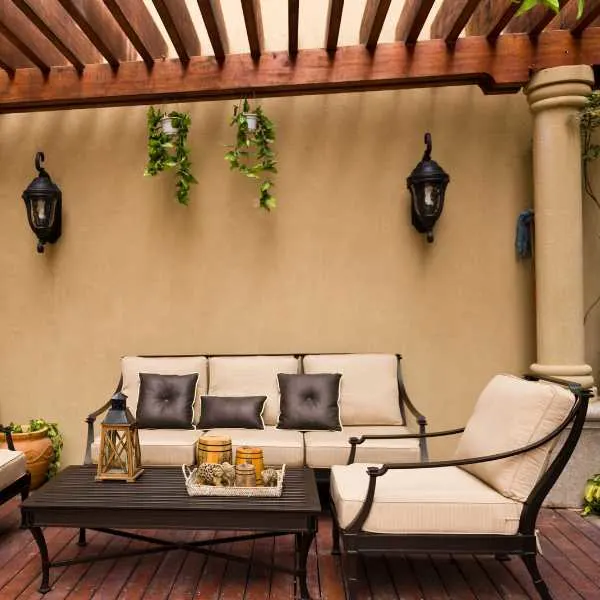
Balance your harmonious interiors with outdoor spaces that echo themes and colors. For example, if you’ve got a traditional home painted in heritage colors and filled with antiques, a minimalist decking area in chrome and faux leather will be jarring.
Instead, create cohesion by hinting at the outdoors when you’re inside and carrying through a design style to outside.
Final Thoughts
Creating a cohesive home where one room flows into the next must be undertaken intentionally. Begin with a clear understanding of your vision for your home and apply it through a consistent design style, color palette, shapes, patterns, and textures.
Related Home Decor Article:
